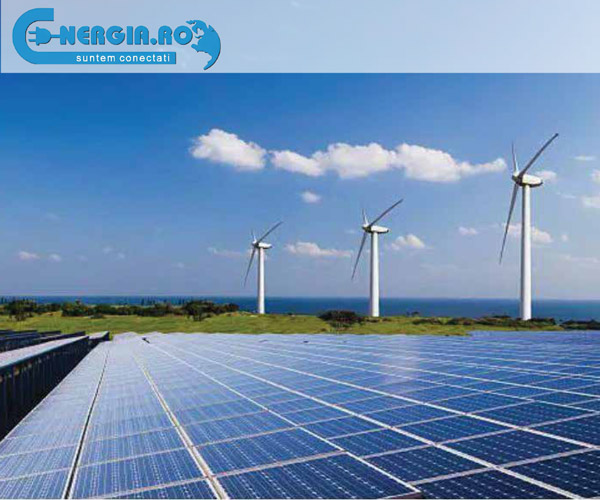ROMANIA: The future of hydrogen in Romania- myths and reality
Share

The Energy Policy Group (EPG), a think-tank specialized in energy and climate policies, has carried out an extensive study on hydrogen, its production, transport and use in the context of the energy transition, the conclusions of which we present to you below
Renewable hydrogen will play an important role in reducing greenhouse gas (GHG) emissions and achieving climate neutrality at the European Union level by 2050. According to the REPowerEU plan, the EU aims to produce an ambitious amount of 10 million tons per year (Mt/year) of hydrogen and respectively to import another 10 Mt/year until 2030. In order to stimulate investments in the development of hydrogen production projects, clear objectives were established for the consumption of renewable fuels of non-biological origin ( RFNBOs) in the industry and transport sector, through the Renewable Energy Directive (RED) III.
Also, the “European Bank for Hydrogen” was proposed as a financial support mechanism in this endeavor. EU Member States have allocated substantial amounts of public funding for hydrogen production from renewable sources, ranging from €0.39 billion/GW in Spain to €1.43 billion/GW in the Netherlands.
Romania has developed its own strategic document in response to the EU Hydrogen Strategy. The National Hydrogen Strategy project, currently in the final phase of adoption, estimates an investment requirement of €4.8 billion to produce 152,900 tons per year of hydrogen from renewable sources by 2030, of which 47, 3% will be used in transport, 37.2% in existing industrial activity and 15.5% in new industrial applications, respectively in steel.
The draft National Strategy underwent various changes during the consultation process and currently proposes an approach aligned with the objectives of decarbonisation of the Romanian economy, by eliminating the use of hydrogen for heating in the residential sector and in combined cycle natural gas turbines (CCGT). However, the public discourse continues to be marked by erroneous accounts of the future of hydrogen, particularly regarding the dubious expectations of replacing natural gas in most current applications, thereby maintaining the use of fossil fuels for decades to come. The EPG report aims to respond, with substantiated data and sources, to these ten “myths” present at the national level.
Myths about hydrogen production
Supporters of hydrogen production based on fossil fuels, namely those who reject the need to abandon fossil fuels, especially natural gas, consider the high cost of renewable hydrogen as the main challenge in its development and advocate the use of steam reforming of methane, as representing a much more efficient alternative.
Myth: Producing hydrogen from renewable sources will be expensive. Although hydrogen from renewable sources has a higher cost than the fossil fuel alternative, there are promising premises for overall cost reduction in the coming years, based on forecasts of significant reductions in electrolyser investment costs (about 5 times to 2030 compared to 2023) and the cost of renewable energy, which has fallen steadily over the last decade, especially solar energy.
Myth: Hydrogen produced from (grey) fossil fuels is more cost competitive. The recent energy crisis demonstrated the volatility of natural gas prices, which can be induced by unforeseen geopolitical actions. Although the currently unexploited natural gas reserves in Romania (Black Sea) create expectations regarding the decrease in the price of natural gas in the coming years, there is no clear/certain forecast about the impact on prices on the wholesale natural gas market. In addition, the use of fossil fuels will become increasingly expensive, given the expected increases in the price of carbon dioxide (CO2) as a result of the EU-ETS review. Thus, the current production of hydrogen based on fossil fuels will have to be phased out.
Myth: Blue hydrogen will be a cost-effective alternative to renewable hydrogen. Another argument invoked in the public space is that blue hydrogen represents a mix between the potential advantages of relatively lower production costs (grey hydrogen – a previously challenged myth) and the reduction of the carbon footprint, through the capture, use and storage (CCUS) of emissions CO2. However, CO2 emissions cannot be completely avoided, as estimated capture rates cannot be higher than 85-95%, while fugitive methane emissions are maintained. Therefore, the price of carbon dioxide would also affect this production method, while CCUS technologies are expensive and increase operational costs. Furthermore, access to CO2 storage infrastructure remains an additional barrier to this production pathway.
Myths about hydrogen consumption
Hydrogen has also been touted as an alternative to directly replacing natural gas in several applications, including home heating, combined cycle gas turbines (CCGTs) and cogeneration plants (CHPs). This narrative is used in the public space to create expectations about the use of existing natural gas infrastructure and counter criticism of investment in new natural gas capacity and associated infrastructure.
Myth: Hydrogen will replace natural gas in heating individual households. According to IRENA, a combination of 80% natural gas and 20% hydrogen could lead to an increase of more than a third in the resulting natural gas price and implicitly in consumer bills. At the same time, such an approach would be inefficient, since almost half of the energy associated with this process would be lost, i.e. for every 1 MWh of renewable energy, between 0.5 and 0.55 MWh of energy would be produced, in the end, under form of heat. Alternatively, direct use of renewable energy for heating via heat pumps is 6 to 9 times more efficient than using hydrogen, as 3-4 MWh of heat could be generated for 1 MWh of electricity produced from renewable sources.
Myth: Hydrogen is a competitive solution for the decarbonisation of passenger transport. Based on a comparison between fuel cell electric vehicles (FCEVs) and battery electric vehicles (BEVs) from the perspectives of cost, efficiency, range, refueling/recharging time, infrastructure development and environmental footprint, it is difficult to make a statement with on the optimal solution for the decarbonisation of passenger transport. However, the market favors BEVs due to cost considerations, amid the constant improvement of battery technology, the development of economies of scale and the existence of charging infrastructure (created through public funding support). The higher overall efficiency of the BEV is also important – around 83% being the conversion efficiency, compared to 30% for the FCEV. Therefore, the energy cost per kilometer is about 2.8 times lower for BEVs compared to FCEVs. However, hydrogen will still play an important role in decarbonising long-haul transport, either through fuel cells or synthetic fuels used in aviation and shipping.
Myth: Hydrogen will replace current fossil fuel consumption in gas-fired power plants. This process would be highly inefficient, estimated at 37%. The effect of this low efficiency and the higher cost of hydrogen compared to natural gas leads to the conclusion that these plants would be economically uncompetitive. Cost considerations may lead to these plants running on natural gas in the long term, which will put pressure on consumer bills and run the risk of not reducing greenhouse gas emissions.
Myths about hydrogen transport
The potential use of existing natural gas networks for hydrogen transport, distribution and blending has also gained momentum domestically as a result of the home heating hydrogen narrative.
Myth: Natural gas pipelines can be easily retrofitted to use hydrogen. The main challenges and uncertainties related to the transport of pure hydrogen or mixed with natural gas in the existing infrastructure are based on the negative effects on pipeline materials (as hydrogen increases the crack rate in steel pipelines over time) and the consequences on operational indicators caused by volumetric energy density less hydrogen compared to natural gas. For long distances, injecting hydrogen through pipelines becomes unprofitable, with 50% of the energy content being lost when transported over distances of 6,000 – 6,500 km. Existing natural gas infrastructure can use small amounts of hydrogen mixed with natural gas without significant impact, but as the proportion of hydrogen increases, problems may arise.
Myth: Hydrogen can be mixed with natural gas in existing pipelines. Although there is concrete evidence of the feasibility of such an approach (for example, Winlaton, UK, which uses a mixture of 80% natural gas and 20% hydrogen or the 20HyGrid nationwide pilot project test carried out by Delgaz in Dârlos), the impact on reducing emissions of CO2 would be minimal. Above this threshold (20%), significant changes would be required for various components, as the maximum concentration of hydrogen in natural gas pipelines is significantly affected by pressure fluctuations, structure and existing defects. A major challenge at the EU level would also be the variety of allowed hydrogen blending rates, which could constitute a barrier from the perspective of its commercialization.
Myth: Hydrogen can be easily transported over long distances. Potential hydrogen transport options present major challenges. For distances less than 1,500 km, transporting hydrogen via natural gas pipelines is generally the least expensive option, but this requires either reusing existing infrastructure or new investment to connect production sources to demand points. For longer distances, transport in the form of ammonia or liquid-organic hydrogen (LOHC) carriers could be a relatively cost-effective option, but the conversions come with significant efficiency losses. The transport of hydrogen could be carried out in a similar way to that of liquefied natural gas (LNG), requiring the liquefaction of hydrogen by cooling it to -253°C, an energy-intensive process, equivalent to 25%-35% of the energy content of the transported hydrogen. Electricity transport may, in certain circumstances, be preferable to pipelines or sea transport. Long-distance high-voltage and ultra-voltage direct current cables, which transport energy in the form of electrons and generate hydrogen locally through water electrolysis, are a promising alternative. However, there are also challenges associated with expanding the existing electricity grid.
Myth: Replacing gas with hydrogen eliminates fugitive emissions (mid-stream/during the process). Fugitive emissions of hydrogen and their effect on the environment must be considered when evaluating its use. According to Atmospheric Chemistry and Physics, hydrogen has an indirect heating potential per unit mass of about 200 times that of CO2.
Hydrogen will most likely be used in a limited number of applications with high added value, i.e. in sectors where technological alternatives for decarbonisation are few. Romania could benefit from the opportunities offered by the renewable hydrogen economy by adopting a pragmatic approach regarding its optimal use, respectively by:
- Basing the national strategic vision and specific legislation on the basis of an objective analysis with scientific data, regarding the opportunities and associated risks;
- Alignment of national strategy documents and legislation regarding decarbonisation targets and hydrogen perspectives;
- Developing and mapping specific funding opportunities for renewable hydrogen at national level;
- The necessary human resource training;
- Adopting a strategic approach to hydrogen imports and exports;
- Understanding the important role of hydrogen storage;
- Attracting investors in the production of equipment for the development of the hydrogen economy.

















